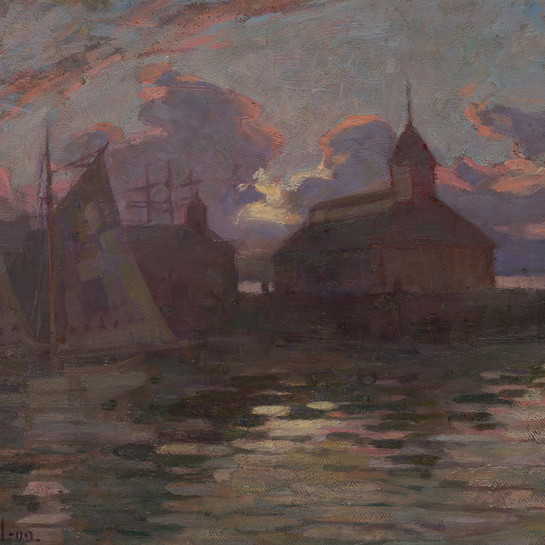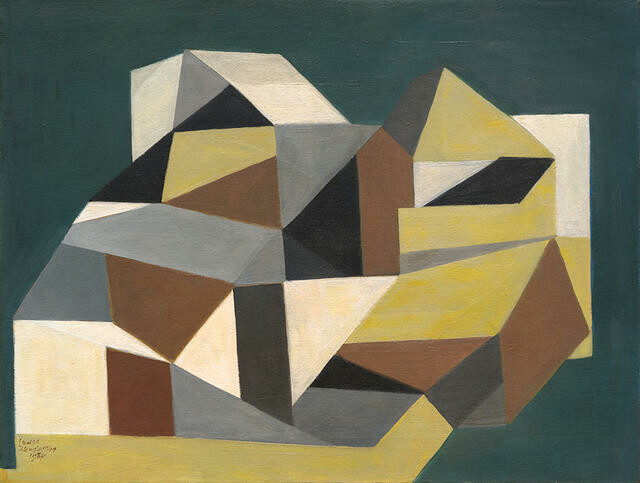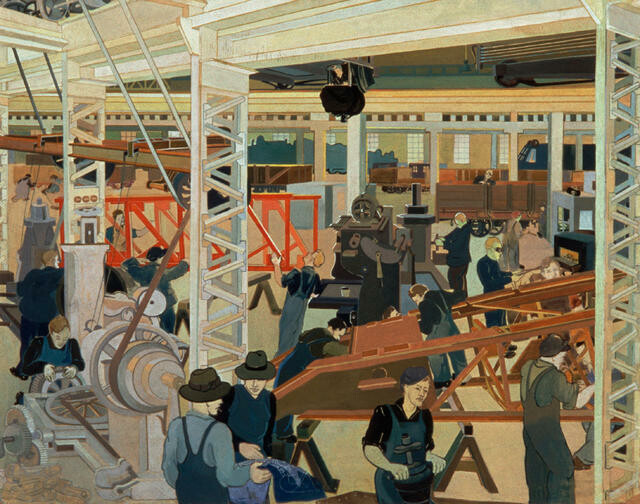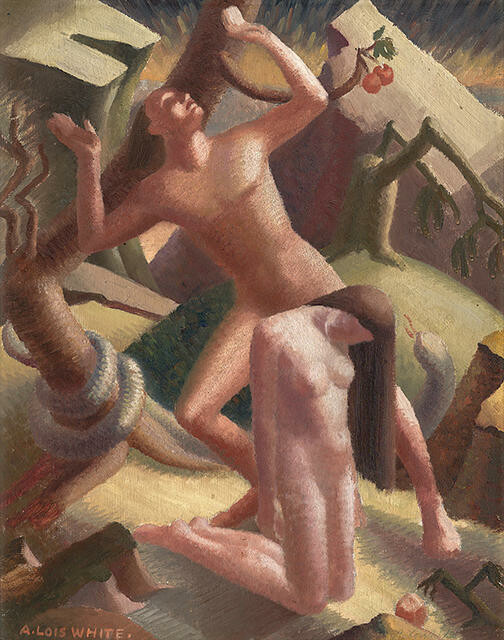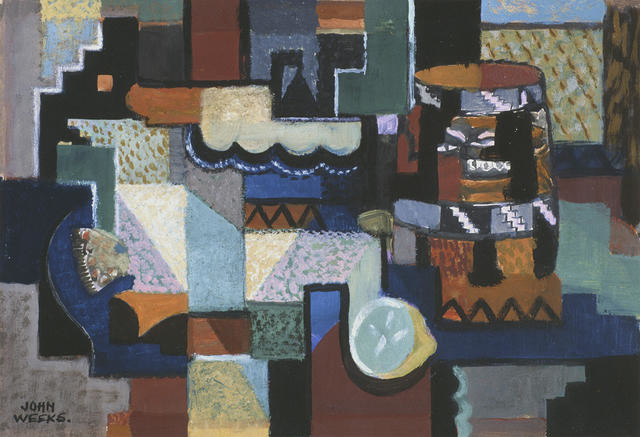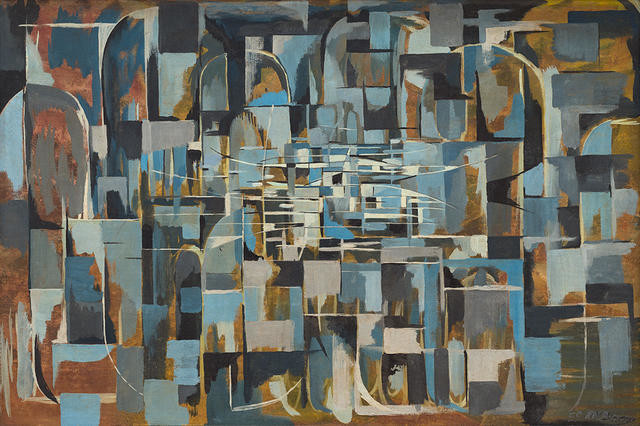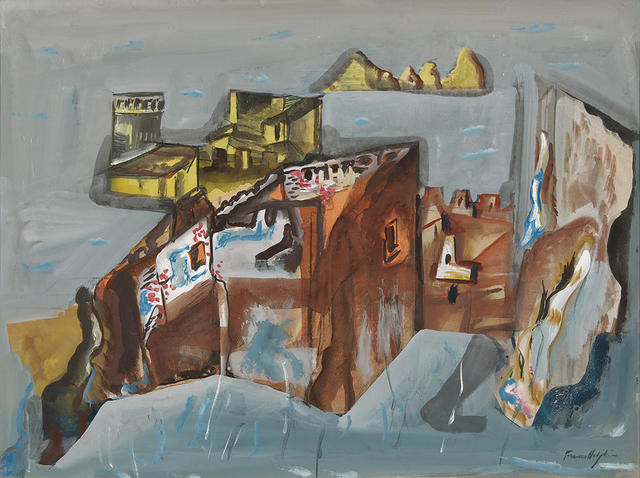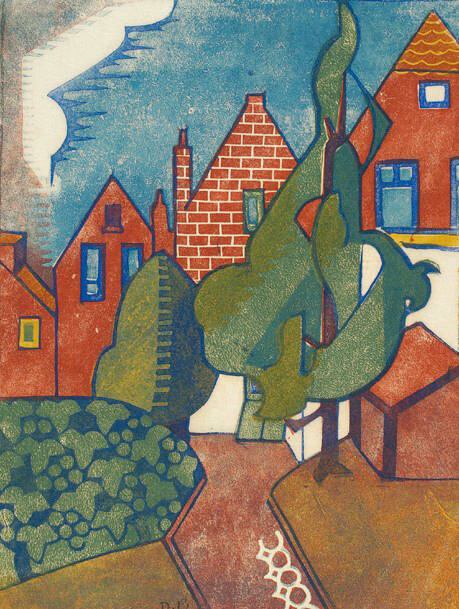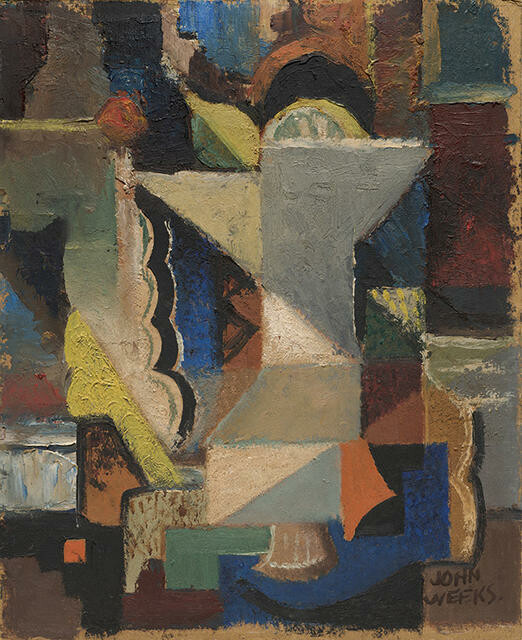Louise Henderson
France / Aotearoa New Zealand, b.1902, d.1994
The Farmhouse in Cornwall
- 1957
- Oil on canvas
- Dame Louise Henderson collection, presented by the McKegg Family, 1999
- 848 x 1092mm
- 99/82
Tags: abstraction, buildings (structures), Cubist, houses
Paris-born Louise Henderson was one of the first Aotearoa New Zealand artists to address abstraction, and became interested in architectural forms during her two years living in the Middle East from 1956–58. Made after a visit to Britain, The Farmhouse in Cornwall shows her use of built structures as a starting point for generating complex and dynamic compositions. Here, an arrangement of hard-edged forms in earthy, subdued tones deftly leads the eye, never completely allowing it to rest in one place.
(Perilous: Unheard Stories from the Collection, 6 August 2022- )
Exhibition History
[Louise Henderson: From Life, 27 June – 11 October 2020] (https://christchurchartgallery.org.nz/exhibitions/louise-henderson-from-life)
In this puzzle-like painting Henderson has reduced an old farmhouse to a collection of individual geometric shapes, which interconnect and lock together on a flat field of green. The flatness of the shapes reveals the influence of post-cubist styles, including the work of French painter Auguste Herbin whom Henderson had met and corresponded with. Though Henderson had a great feeling for history and a passion for different cultures, here she has subsumed identifiable features into a highly logical and structured scene that seems to erase the house at the same time as it represents it.
(Louise Henderson: From Life, 27 June – 11 October 2020)
Cubism came late to New Zealand art, some forty years after its heyday in Europe. In the 1940s and 1950s, it represented the cutting edge of progressive painting in this part of the world. Louise Henderson was one of its primary exponents. Many of her cubist compositions were based on buildings set in landscapes. Her interest in architectural forms, as well as the internal geometries of painting, had been acquired earlier, during the years she spent working in Christchurch and Wellington. ‘Here was a classical intellectual painter working on a planned line of development,’ wrote fellow artist Janet Paul on seeing a survey of Henderson’s work in 1954. ‘A painter whose concentration on form does not obscure a fine use of colour and who can use cubism not as a “fag end” to be worked out, but as a pertinent method to convey her own most individual perception and emotion.’
(March 2018)
In Modern Times, 18 December 2015 – 11 September 2016
Paris-born Louise Henderson (née Sauze) arrived in Christchurch in 1925 after marrying a New Zealander. Her background as a designer led to her teaching embroidery and design from 1926 at the Canterbury College School of Art. She also began painting and exhibiting locally from 1933, mainly with The Group, a Christchurch art association which existed from 1927-77.
The Hendersons left Christchurch in 1941 for Wellington, and in 1950 moved to Auckland, where Louise, encouraged by John Weeks, began to experiment with pure abstraction. In 1952, she travelled to Europe for further study, including in Paris at the studio of Jean Metzinger, an early protégé of the founding cubists Pablo Picasso and Georges Braque. Her new work gained considerable exposure in New Zealand. A period of intensive travel followed, through her husband's career, in Europe and the Middle East. This work displays the influences Henderson was continuing to draw from at that time, particularly post-cubist developments in European art.


